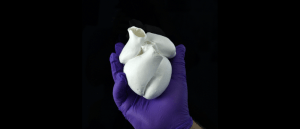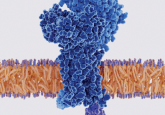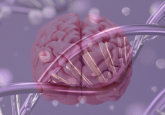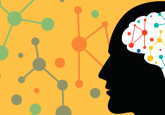How many carats does it take to diagnose dementia?

An international group of researchers has developed a new way to detect brain abnormalities using laser-based diamond sensor technology.
Research led by the Fraunhofer Institute for Applied Solid State Physics (Freiburg, Germany) and experts in diamond sensing technology from the Royal Melbourne Institute of Technology (RMIT University; Australia) have made a breakthrough in magnetic-field sensing technologies. Improving upon current imaging technology, this sensor offers a smaller, lower cost and more convenient alternative to magnetoencephalography (MEG) while preserving its sensitive diagnostic capabilities.
MEG technology uses the magnetic fields generated by electrical brain activity to measure temporal and spatial properties of neuronal firing and relies on liquid helium to achieve extremely cold temperatures. It is a sensitive technique, but remains large and expensive, requiring a dedicated facility, and the device restricts patient movement while imaging is taking place. For patients with Alzheimer’s disease, epilepsy and concussion, improving MEG and developing this enhanced diamond sensor could offer earlier detection, additional information about the site of activity and allow for more targeted interventions.

Step aside 3D printing, there’s a new technique for biofabricating a heart
A novel technique to biofabricate a heart ventricle helps to answer a question about the purpose of its helical alignment.
“We really want to have something that we can place on a patient’s head and we want them to be able to move around – and there’d be no need for expensive liquid helium to operate such a device,” commented co-researcher Andrew Greentree (RMIT University, Australia).
Diamond is already being utilized to sense magnetic fields. The light is reflected from the diamond’s quantum defects or its negatively charged nitrogen-vacancy centers and changes depending on the strength of the magnetic field. However, currently, most of that light is being lost. By collecting all the light reflected from the diamond, the researchers could detect changes in the magnetic field 10 times more precisely when compared to current best practice methodologies. Additionally, this device works at room temperature and can be fitted to the patient’s head allowing them to move around.
“With Alzheimer’s, you want to be able to monitor the progression of the disease and know the effect of any treatments. It’s similar with concussion, you want to be able to measure what’s happening in the brain after each knock,” the study’s authors commented “With this MEG technology we envisage, you might be able to pick up early-onset dementia. With epilepsy, you could find out where it’s occurring, and that would help you to better target interventions.”
Higher precision and increased convenience of MEG technology via these diamond sensors has the potential to revolutionize the way medical professionals diagnose and treat serious neurological diseases and injuries.





